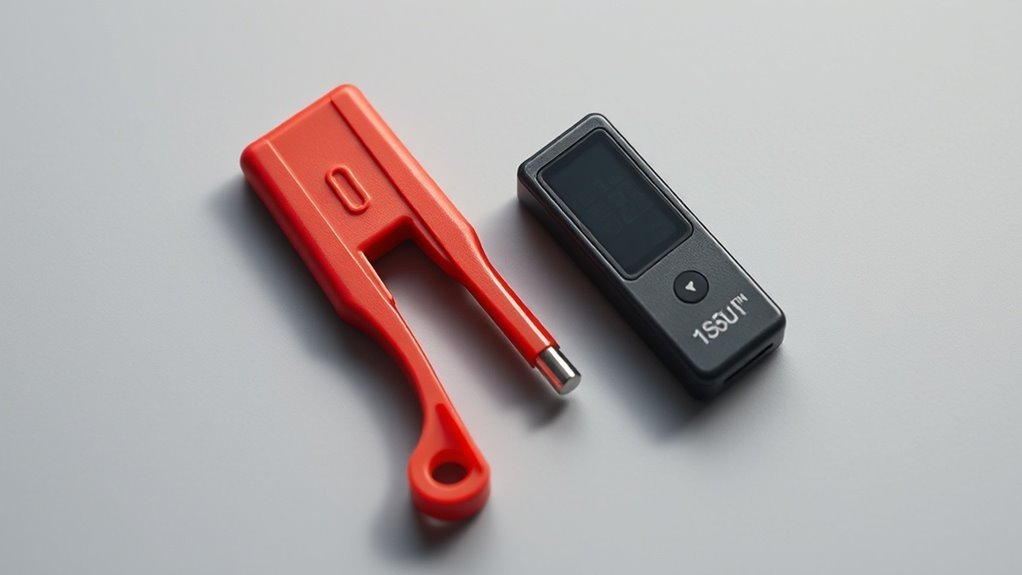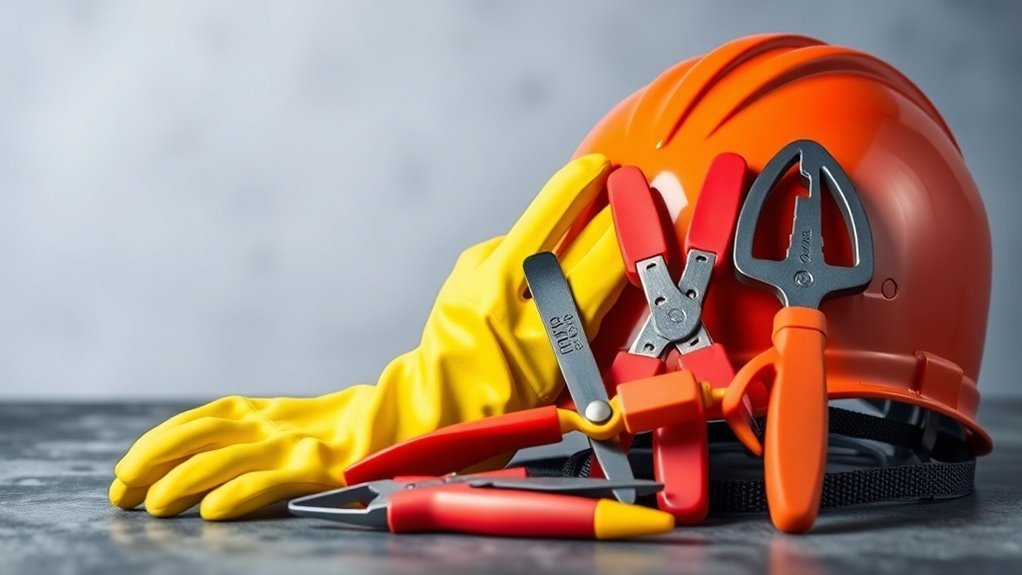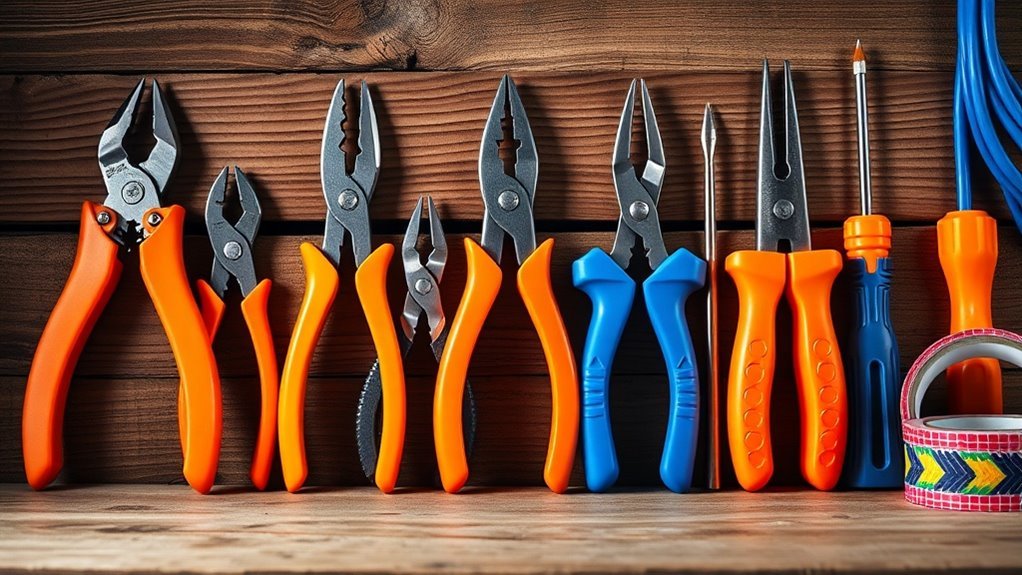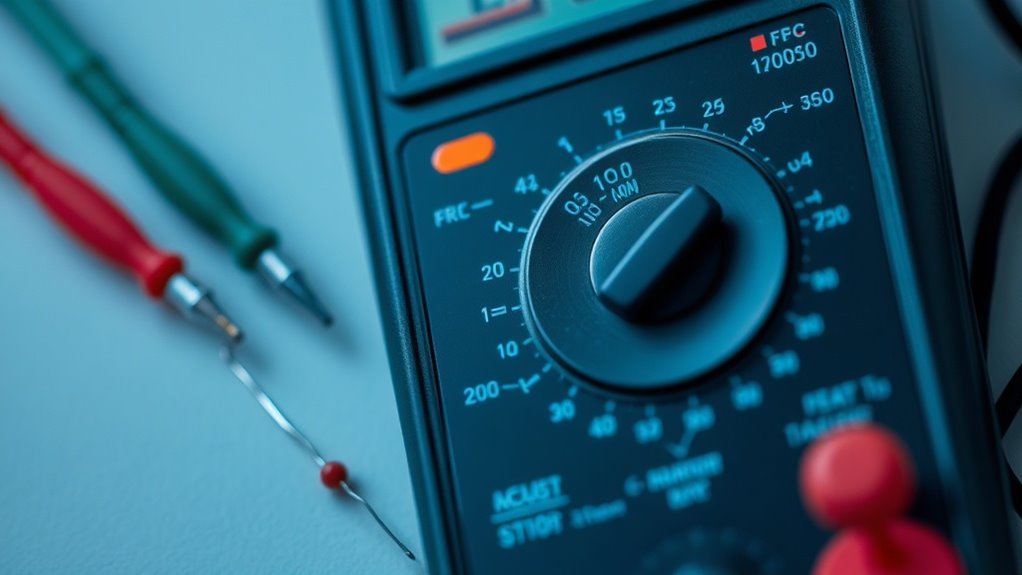Circuit Testing Tools and Their Applications
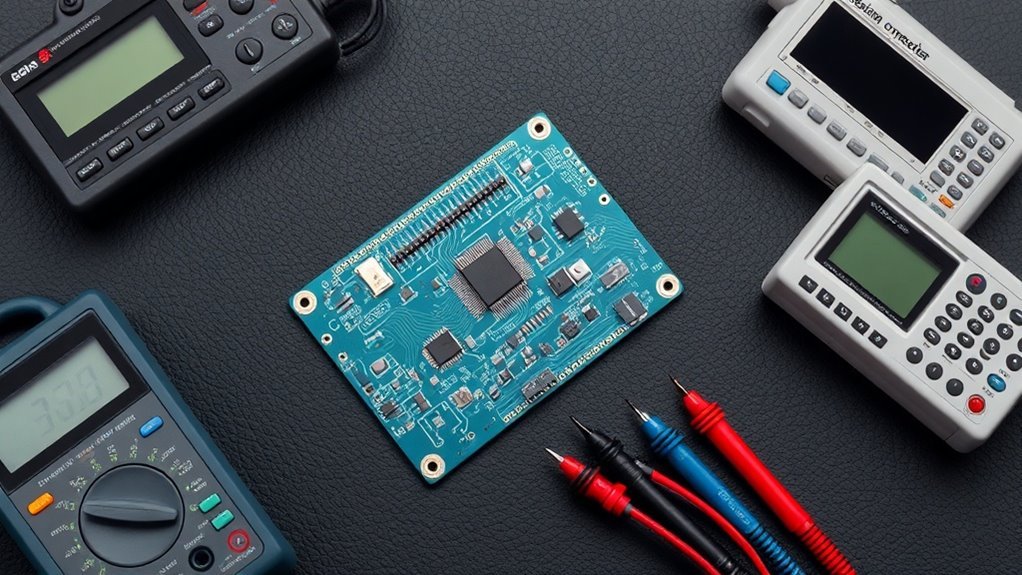
Circuit testing tools are essential for diagnosing electrical issues and ensuring safety. You’ll find devices like multimeters, oscilloscopes, and circuit testers useful for measuring voltage, current, and continuity. These tools apply to electronics repair, engineering, and educational settings, providing hands-on experience. When selecting tools, consider accuracy, versatility, and portability. Always test in a tidy area and double-check connections for accurate results. If you keep exploring, you’ll uncover even more about optimizing your circuit testing skills and knowledge.
Key Takeaways
- Circuit testing tools, like multimeters and oscilloscopes, are crucial for diagnosing faults and ensuring circuit safety and performance.
- They are widely used in electronics repair, engineering, education, and by hobbyists to enhance project efficiency.
- Key features to consider include accuracy, versatility, portability, user interface, and compatibility with other devices.
- Regular calibration and maintaining a tidy workspace are vital for effective and consistent testing results.
- Documenting findings and repeating tests improves reliability and facilitates better troubleshooting of electrical systems.
Understanding Circuit Testing Tools
Understanding circuit testing tools is essential for anyone working with electrical systems. These tools help you diagnose issues, guarantee safety, and maintain peak performance.
Familiarizing yourself with them enables you to troubleshoot problems effectively and efficiently. Whether you’re an electrician, technician, or enthusiast, grasping their usage can save you time and money.
It’s important to know how to interpret the readings they provide, which can indicate whether circuits are operating correctly. As you enhance your skills in using these tools, you’ll gain confidence in addressing electrical challenges in various environments. Additionally, mastering how to use multimeters in diagnostics can lead to a deeper understanding of electrical systems.
Ultimately, your ability to utilize circuit testing tools can notably impact the reliability and functionality of electrical installations and repairs.
Types of Circuit Testing Devices
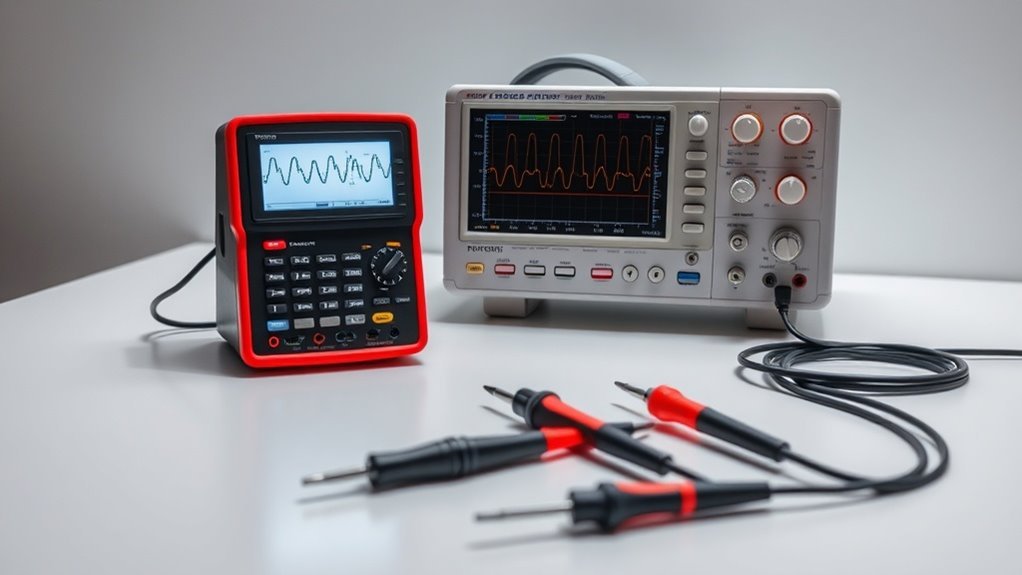
There are several key types of circuit testing devices that every technician should know. First, you’ve got multimeters, essential for measuring voltage, current, and resistance.
Key circuit testing devices include multimeters for measuring voltage, current, and resistance—an essential tool for every technician.
Then, there are oscilloscopes, which let you visualize waveforms and diagnose circuit behavior in real time. Next up, you’ll find circuit testers, perfect for checking if a current is flowing correctly through a circuit.
You shouldn’t forget about continuity testers, designed to guarantee that there’s a complete path for current flow. Finally, you may use signal generators, which produce waveforms to test circuit response.
Knowing these devices not only boosts your efficiency but also improves your troubleshooting skills in electrical systems.
Applications of Circuit Testing Tools
When you explore the applications of circuit testing tools, you’ll discover they’re invaluable across various fields, from electronics repair to educational settings.
In repair shops, these tools help technicians diagnose faults quickly, saving time and money on repairs. Engineers use them during development to guarantee circuit designs meet specifications and function correctly.
In educational environments, circuit testing tools enhance hands-on learning, allowing students to experiment and troubleshoot real circuits, fostering a deeper understanding of electronic concepts.
Additionally, hobbyists and makers rely on these tools to optimize their projects, assuring safe and efficient operation.
Whether you’re a professional or a beginner, circuit testing tools play an essential role in your projects and operations, allowing for precision and reliability.
Key Features to Consider
As you evaluate circuit testing tools, it’s essential to take into account several key features that can greatly impact their effectiveness.
First, consider the tool’s accuracy; precise measurements are essential for reliable results. Next, look for versatility; a tool that can handle multiple types of tests will save you time and resources.
Portability is another important aspect; lightweight and compact tools make it easier for on-site testing. Additionally, assess the user interface; a clear and intuitive design can streamline your workflow.
Finally, check for compatibility with other devices and software, as integration can enhance functionality. By focusing on these features, you’ll guarantee that you’re investing in the right tools for your circuit testing needs.
Tips for Effective Circuit Testing
To guarantee you’re getting the most accurate results during circuit testing, it’s essential to prepare your equipment and environment properly. Start by checking your tools for functionality; verify your multimeter, oscilloscope, and any other instruments are calibrated.
Next, keep your testing area tidy and free from distractions, as a cluttered space can lead to mistakes. Always use the right probes for your measurements and follow safety protocols to prevent accidents.
Before testing, double-check your circuit connections; loose wires can skew results. Document your findings meticulously, noting any anomalies. Additionally, understanding how a multimeter measures voltage, current, and resistance can significantly enhance your testing accuracy.
Finally, don’t hesitate to repeat tests if results seem off; consistency is key in achieving reliability in your data. Following these tips will enhance the accuracy of your circuit testing.
Questions
How Do I Choose the Right Circuit Testing Tool for My Project?
To choose the right circuit testing tool for your project, consider your specific requirements, such as the type of circuit, testing environment, and budget. Research various tools and read reviews to make an informed decision.
Can Circuit Testing Tools Be Used for Both AC and DC Circuits?
Circuit testing tools can tackle both AC and DC circuits like a superhero conquering two worlds. Just make certain the tool specifications match your circuit type, and you’ll be ready to test with confidence.
What Safety Precautions Should I Take While Using Circuit Testing Tools?
Always wear safety goggles and gloves, guarantee circuits are de-energized before testing, and avoid working in wet conditions. Keep your tools in good condition and follow manufacturer guidelines to prevent accidents and injuries.
How Often Should I Calibrate My Circuit Testing Devices?
You should calibrate your circuit testing devices at least once a year, or more frequently if you notice inconsistencies in readings. Regular calibration guarantees accuracy and prolongs the lifespan of your testing equipment, keeping you safe.
Where Can I Find Tutorials for Using Circuit Testing Tools Effectively?
You can find effective tutorials for using circuit testing tools on platforms like YouTube, Coursera, or specialized electronics websites. Many offer step-by-step guides, enhancing your understanding and skills while using these tools effectively.
Conclusion
In the fast-paced world of electronics, circuit testing tools are your trusty compass, guiding you through the intricate maze of connections and currents. By understanding the diverse range of devices and their applications, you can guarantee your projects not only work but thrive. Remember to focus on key features and employ effective testing strategies. With the right tools and techniques, you’ll navigate the circuit landscape with confidence, turning potential challenges into seamless journeys of innovation.


